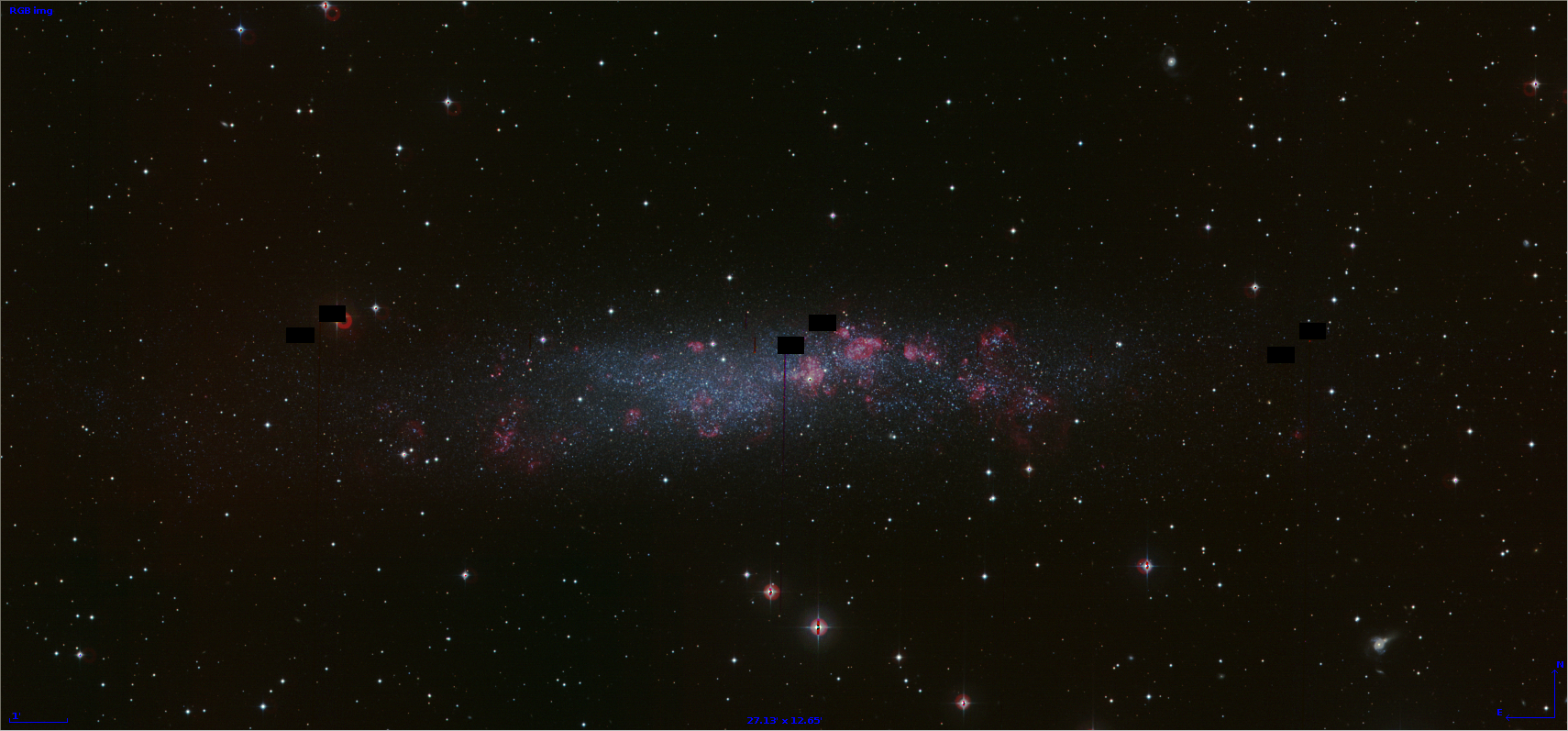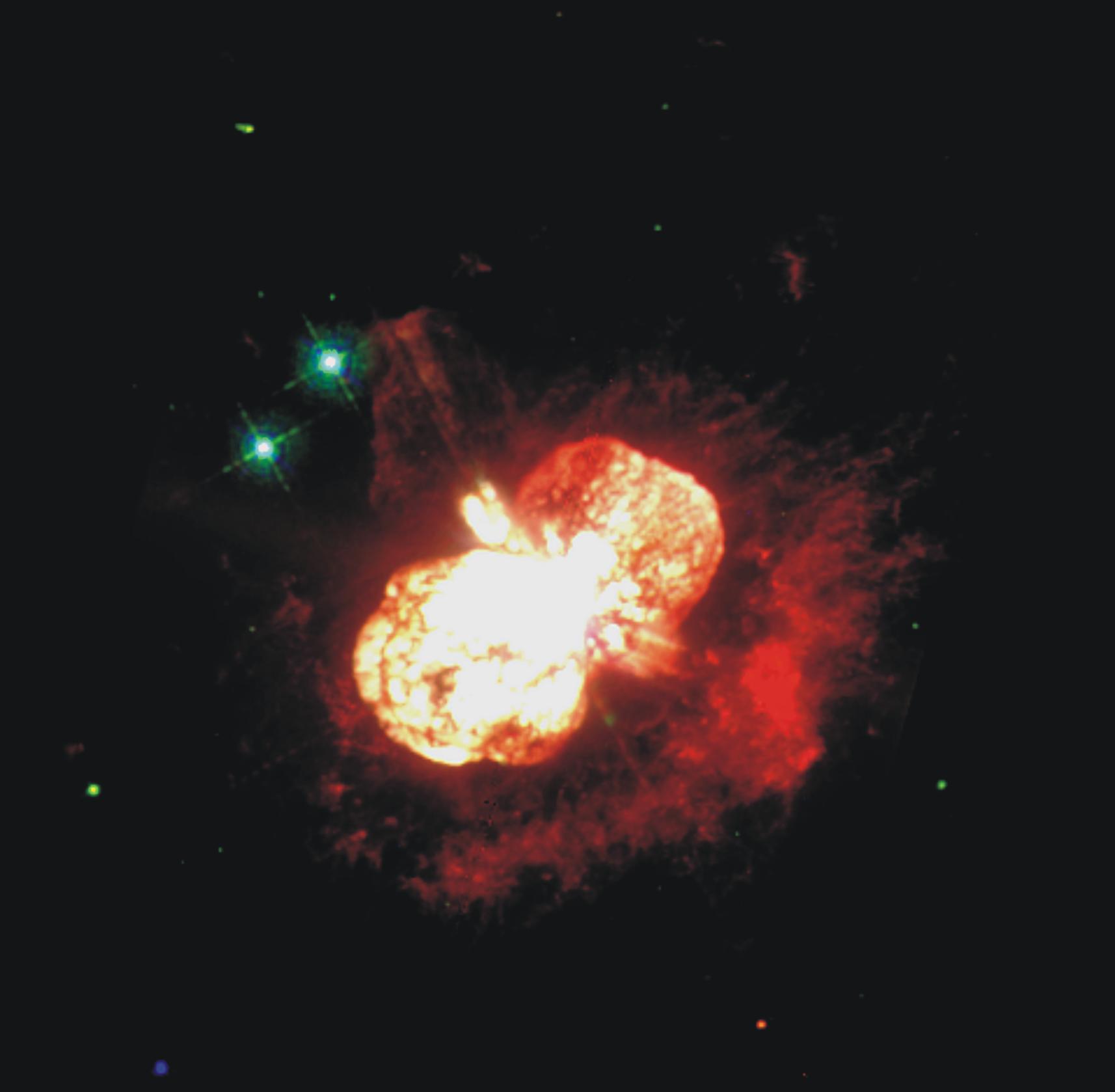stellar physics
Our research in the field of stellar physics is oriented towards
massive stars, their evolution and interaction with the environment.
We are studying the star's winds, their mass loss, as well as spectral
and photometric variability. Special emphasis is placed on
Luminous Blue Variable stars and their circumstellar nebulae. A
growing program are searches and characterizations of SN impostors and
similar stellar transients, and the use of such transients to detect
hypervelocity stars. Projects are also underway to analyse resolved
stellar populations in various galaxies (especially with low metallicity) to test stellar evolution models, as well as the global
stellar feedback from stars to galaxies on larger spatial scales
(links: early universe, evolution of disk galaxies)
We use a multi-wavelength approach, using especially ground and space-based UV, optical and NIR photometry and intermediate and high-dispersion spectroscopy, as well as X-ray spectroscopy. A new growing interest of our group is the application of different kinds of integral field spectroscopy.

The color image of the nearby, low-metallicity galaxy NGC 3109 was produced by our group (Wittkowsky et al. 2011) to analyse the upper HRD and search for massive, variable stars in this galaxy.

Color HST-image of the Homunculus nebula around the LBV eta Carinae (Weis 1999). Detailed analyses of this as well as other LBV nebulae are part of the research done within our stellar physics group.
Current members:
Dominik Bomans, Kerstin Weis, Birgitta Burggraf, Alexander Becker



